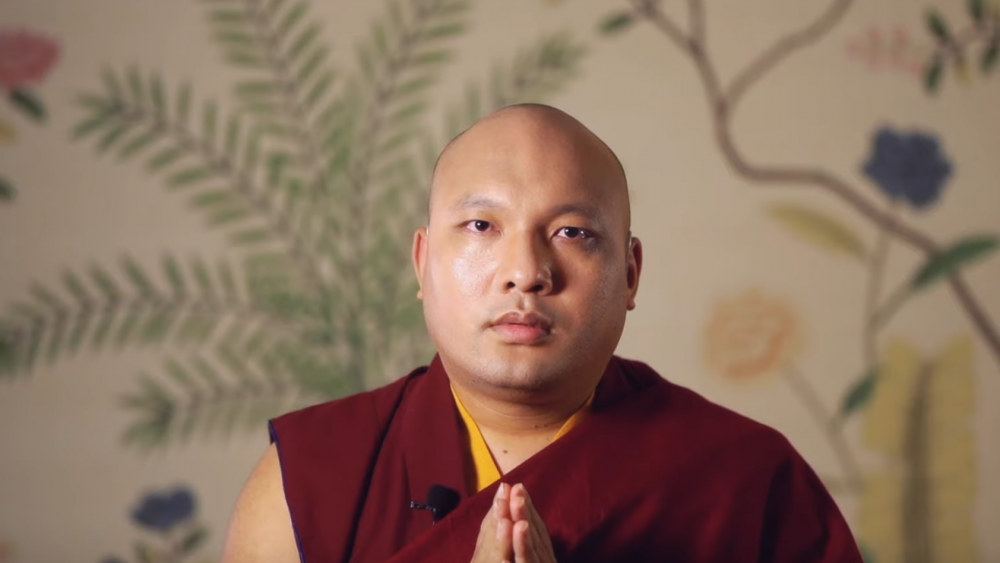I hope all of you are doing well.
Today is the second day of the Aspirations to End Adversity. Today, the prayers we will recite together are the Noble Aspiration for Excellent Conduct and the Sutra in Three Sections. These two are important texts for practitioners of Mahayana dharma, because the main aim of Mahayana practice is to achieve buddhahood.
Buddhahood is the result of gathering vast accumulations and abandoning the obscurations and their imprints. Thus, anyone who wishes to achieve buddhahood must definitely strive to gather the accumulations and purify obscurations. There are many ways to gather the accumulations and purify obscurations, but the Aspiration for Excellent Conduct divides them into the seven branches or parts of prostration, offering, confession, and so forth. Doing it this way has distinct advantages, including covering all the main points and being easy to remember. No matter what practice we do, whether sutra or tantra, the seven branches almost always appear within it.
It is not only Tibetan Buddhists who consider the Aspiration for Excellent Conduct to be extremely important. All of the northern Buddhist traditions, including the Chinese, Japanese, and Korean hold it in very high esteem. Its source is the Avatamsaka Sutra; it is taken from a chapter in one section of that. But because this Aspiration for Excellent Conduct is so important and well-known, a tradition of reciting it separately developed. In brief, the Aspiration for Excellent Conduct is not merely a text we recite orally or the words of a prayer. Rather, it is profound guidance and pith instructions on all the main points of practicing the Mahayana path.
The Sutra in Three Sections, which is commonly called the Confession of Downfalls, is very common in Tibet. It is called the Sutra in Three Sections because it has three parts—confession, rejoicing, and dedication. Many Mahayana sutras and treatises teach that bodhisattvas should definitely recite this sutra to confess and purify their wrongs and downfalls. In Tibet, this sutra is recited primarily as a confession. In Chinese Buddhism, there is not really any tradition of reciting this sutra, but there is a tradition of reciting the names of and making confessions to eighty-eight buddhas, including all of the thirty-five buddhas mentioned in the Sutra in Three Sections.
Among Tibetan traditions, there are slightly different ways of reciting the Sutra in Three Sections. For example, in the Geluk tradition, the word tathagata is added before the name of each buddha. In his writings, Karmapa Mikyö Dorje also said that doing so was a pith instruction of Telopa and Naropa. However, these are merely differences in the style of recitation, and there is no difference at all in the meaning.
Next, please join me in reciting the Aspiration for Excellent Conduct and the Sutra in Three Sections with the kind intention of bringing benefit to all sentient beings.



